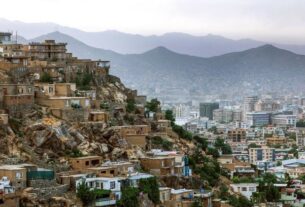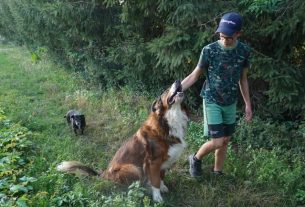About 20 years ago, Matteo Martelli was browsing in a bookshop when he chanced upon an intriguing work. Opening the pages of “The Origins of Alchemy in Graeco-Roman Egypt”, he became engrossed.
Martelli is a professor at the University of Bologna in Italy who trained in the history of classical languages. His interest was piqued by hints of alchemy’s rich past and mythology in Jack Lindsay’s 1970 book.
History lessons
‘The text mentions a very interesting account on the origins of alchemy, in which its practices were said to be a revelation from fallen angels,’ said Martelli. ‘This hinted that the angels revealed the secrets of nature to women in exchange for sexual favours, which was something I had never heard about.’
Alchemy is shrouded in spirituality and religion, having often been dismissed as a pseudoscience involving deluded efforts to transform base metals into gold.
But Martelli was inspired to find out whether there was more to it.
This opened up a new path for him into the history of science, culminating in the EU-funded AlchemEast project that he led. The initiative, begun in December 2017, ended in April this year.
Over the five years, AlchemEast looked into alchemy from 1 500 BC to the early 1 000s AD, tracing it from ancient Babylonia via Graeco-Roman Egypt to the early Islamic period and seeking to dismantle the traditional pejorative view on its practices.
Far from being just about gold, ancient alchemy drew on multiple techniques for manipulating raw materials to make dyed metals, artificial gemstones, coloured glass and textiles, and chemical compounds, according to Martelli.
‘Looking at this is important to understand what role chemistry and alchemy, which in my opinion are basically the same things in different periods, played in the past in the construction of modern science,’ he said.
Ancient experiments
Apart from delving into ancient texts and chemical recipes, his team even tried to recreate past practices in the laboratory to get inside how some of the ideas evolved.
“
You can make silver look exactly like gold just by dipping a silver coin in these divine waters.
The researchers reproduced artificial golden ink using ingredients like honey and silica and experimented with so-called divine waters, which comprise sulphur-containing compounds.
‘It’s amazing: you can make silver look exactly like gold just by dipping a silver coin in these divine waters for a few seconds,’ said Martelli. ‘You can really understand why they started to believe it was possible to make gold using this process.’
Other experiments involving the extraction of mercury from cinnabar added insight into why mercury was viewed in the alchemical tradition as a common constituent of all metals.
Martelli plans to make perfumes from recipes inscribed on ancient Mesopotamian tablets. He hopes that experimenting in ways different from those used today will offer a new perspective and even result in scientific discoveries.
Female footprints
The research of Martelli and others in recent decades is prompting a reassessment of the traditional view of alchemy, now viewing it as a serious forerunner of modern chemistry.
In the process, light is being shed on the integral role women played in the practices of alchemy.
Women constitute only around a third of scientific researchers worldwide and the lack of visible female role models is acknowledged as one of the reasons.
‘In the earliest phases of alchemy, women seem to have played an important role,’ said Martelli. ‘And they were not just practitioners but appeared as goddesses in the mythology, as with Isis, the ancient Egyptian goddess of healing and magic said to have encountered an angel who revealed alchemical secrets to her.’
One of the most prominent early practitioners was Maria the Jewess, who lived in Alexandria sometime between the first and third centuries AD and who is credited with the invention of several types of chemical apparatus.
These included the bain-marie, a hot water bath named after her and commonly used by chefs today.
Women’s involvement in alchemy continued into the early modern period, according to a separate EU-funded project called WALCHEMY, which looked at literary works authored by women in 16th- and 17th-century Britain.
Women’s writing
The seeds of the project were sown when Dr Sajed Chowdhury, assistant professor of early modern English literature at Utrecht University in the Netherlands, was doing his doctorate on women’s writing in the Renaissance period from the 14th to the 17th centuries.
‘What I found was that a lot of the time female writers, like their male contemporaries, were drawing upon this idea of alchemy, which was really the craft of chemical transmutation of metals, herbs, minerals and plants,’ Chowdhury said.
“
The sheer range of women who were engaging with the language of alchemy surprised me.
Aided by texts rediscovered by feminist scholars in recent decades, he found evidence – from literary forms such as poetry and chemical recipe books – that women’s involvement was even more widespread than he expected.
‘The sheer range of women who were engaging with the language of alchemy surprised me,’ Chowdhury said.
By analysing these texts, he reconstructed a history of alchemy that was not the sole domain of men but rather one in which women from a variety of backgrounds played a central role – helping tell the story of these forgotten voices.
‘They weren’t necessarily doing it for money but as charitable healthcare and part of their Christian endeavour to work in their communities,’ Chowdhury said. ‘Scientific endeavour in the household involved both men and women.’
One example came from the recipe books and prose meditations of Lady Grace Mildmay, an English noblewoman who practised medical and spiritual alchemy in her home and local area of Northamptonshire during the second half of the 16th century.
Excerpt from Grace Mildmay’s handwritten recipe (c. 1598). Reproduced with the permission of Northamptonshire Record Office, Northampton.
The sources pointed to a wider practice involving women.
‘What survive in large numbers are recipe books that are basically instructions on how to run your household,’ said Chowdhury. ‘These contain what we would describe as alchemical procedures such as distillation, fermentation and calcination.’
These processes involved the likes of herbs to use in medicines, instructions for making detergents and cleaning brass, and culinary procedures such as how to purify honey.
Chowdhury said that even the work of Robert Boyle, an Anglo-Irish natural philosopher viewed by many as one of the “fathers of modern chemistry”, is thought to have been influenced by his elder sister, Lady Ranelagh, who carried out experiments in the household.
Key figures
The research has led to a study by Chowdhury entitled “Women Writers and Alchemy in Early Modern Britain”, which is under peer review.
It highlights works by 12 women, focusing on, among others, Mildmay, Aemilia Lanyer, who was the daughter of a court musician, the republican Lucy Hutchinson and Protestant mystic Jane Lead.
Meanwhile, Chowdhury plans further research into scientific practices in 17th-century convents in a bid to uncover what happened in all-female environments.
‘We know that women in these convents were practising medicine and engaged with herbology, but these convent archives are largely untapped and are scattered around Europe,’ he said.
Apart from assigning greater gravity to alchemy, the study of this area is providing more prominence to women’s role in the world’s scientific past.
‘We see that the alchemist is female a lot of the time,’ said Chowdhury. ‘If we are to get a more inclusive understanding of the history of science, then we have to include women’s contribution.’
Research in this article was funded via the EU’s European Research Council (ERC) and the Marie Skłodowska-Curie Actions (MSCA). If you liked this article, please consider sharing it on social media.
Watch the video



